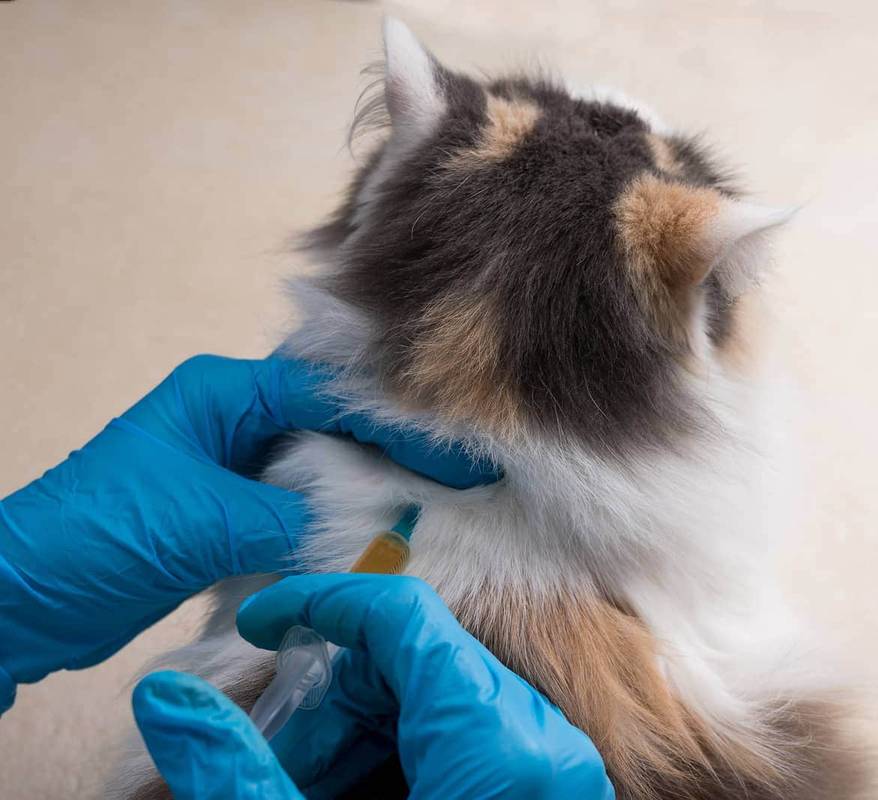
-
Find the right food for your petTake this quiz to see which food may be the best for your furry friend.Find the right food for your petTake this quiz to see which food may be the best for your furry friend.Featured products
 Adult Chicken & Barley Recipe Dog Food
Adult Chicken & Barley Recipe Dog FoodSupports lean muscle and beautiful coat for adult dogs
Shop Now Puppy Sensitive Stomach & Skin Salmon & Brown Rice Recipe
Puppy Sensitive Stomach & Skin Salmon & Brown Rice RecipeDelicious, highly digestible recipe, gentle on stomachs. Nourishes skin & promotes a lustrous coat
Shop Now Puppy Large Breed Chicken & Brown Rice Recipe
Puppy Large Breed Chicken & Brown Rice RecipeVital nutrients to support 5 essential building blocks for lifelong health
Shop NowFeatured products Adult Urinary Hairball Control Chicken & Rice Recipe Cat Food
Adult Urinary Hairball Control Chicken & Rice Recipe Cat FoodActively supports the health of the whole urinary system
Shop Now Kitten Chicken Recipe
Kitten Chicken RecipeVital nutrients to support 5 essential building blocks for lifelong health
Shop Now Adult 7+ Chicken Recipe Cat Food
Adult 7+ Chicken Recipe Cat FoodSupports energy level and beautiful fur in mature cats
Shop Now -
Dog
- Dog Tips & Articles
-
Health Category
- Weight
- Food & Environmental Sensitivities
- Urinary
- Digestive
- Joint
- Kidney
-
Life Stage
- Puppy Nutrition
- Adult Nutrition
- Senior Nutrition
Cat- Cat Tips & Articles
-
Health Category
- Weight
- Skin & Food Sensitivities
- Urinary
- Digestive
- Kidney
-
Life Stage
- Kitten Nutrition
- Adult Nutrition
Featured articles The Incredible Science Behind Your Pet's Microbiome
The Incredible Science Behind Your Pet's MicrobiomeLearn what a pet's microbiome is, how it contributes to your pet's gut & overall health, and why nutrition is important in maintaining healthy microbiomes.
Read More Pet Food Storage Tips
Pet Food Storage TipsDiscover how and where to store your dry, as well as canned, dog and cat food. Learn how to find the "best before" dates on all Hill's pet food packaging.
Read More Water
WaterDiscover why water is the most important nutrient for your dog or cat to live a healthy life. Find out how much water your pet should consume each day.
Read More -


Being sick is no fun, especially when you have to take medicine in order to feel better. It's no different for your furry friends. Whether for an illness or allergies, medicine for cats is sometimes required to improve their health.
Use these helpful tips on how to give your cat a pill to make the process less stressful for both of you, and help get her on her way back to feeling better.
Holding Your Cat
For some cats, simply being held can create stress. Approach your cat carefully, speaking to her in a gentle and soothing voice as you scoop her up. Wrap her in a towel or blanket, fully supporting her legs so they don't dangle freely, which can make her feel uncomfortable and insecure, Marilyn Krieger shares with Petcha.
How to Give Your Cat a Pill
Medicine for cats usually comes in pill form. With medication in hand, keep this in mind: cats are smart creatures that don't take kindly to changes in their routine, and they won't make it easy on you. Unlike your dog, who will happily scarf a pill down in a spoonful of peanut butter, you'll have to approach your cat in a calm but calculating way.
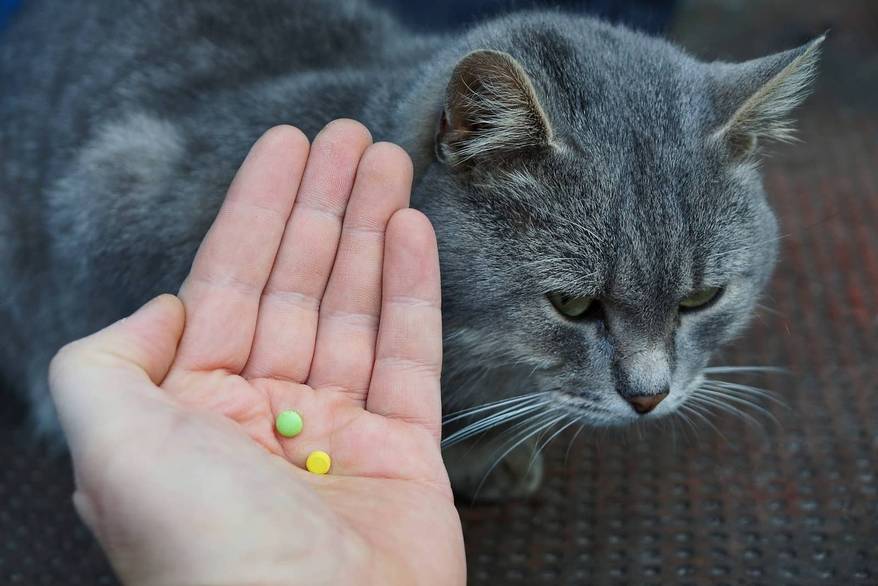
If you have a cooperative cat, try putting the pill directly in her mouth. Don't toss the pill into her mouth because you run the risk of a choking hazard (or she'll just spit it right back out at you). Instead, place it on the center of her tongue near the back of her mouth, then gently rub her throat to encourage the pill to go down, advises the ASPCA Pet Health Insurance. Offer her a fresh bowl of water to wash it down.
The "Meatball"
Another method for how to give your cat a pill requires a stealthier move than putting the medicine into her mouth. Start by hiding the pill in her usual food dish with her usual food. Wet or semi-moist cat food works best, but if your fur baby only eats kibble, you can give her the moist food when she takes the pill, making it an exciting treat.
Another is to hide the pill in a small ball of cat food. This game of hide-and-seek can be played with a pill hidden in her wet food that you form into a ball and present to your kitty as a fun snack.
If your cat refuses the pill in her food, you may be tempted to feed her people food, like tuna, to tempt her. However, many foods can cause gastrointestinal distress in cats. Always check with your veterinarian before giving non-pet food to your kitty.
Cat Food Gravy
If you're looking for another option for how to give your cat a pill, you may be tempted try crushing it into a powder form. But, as Animal Planet points out, "unless your vet recommends it, never crush or grind pills to put in food or water. Crushed medication can taste bitter, so your cat won't get the full dosage." Always get your vet's express permission before administering medicine for cats this way.
You can crush the pill between two spoons or consider investing in a pill crusher/cutter at your local pharmacy. This tool makes crushing a little simpler and cleaner, as the medication is contained to the device, and they only cost a few dollars.
Stir the crushed-up medication in a small portion of cat food gravy, which (hopefully) your kitty will lap up. The strong flavor of the gravy will tone down the gross taste of the pill. Never give your cat medication in milk, since many cats can't digest dairy. If she refuses a spoonful of gravy, incorporate it into her regular food, either as a special topping for kibble or mixed with wet food.


Tasty Tips
Liquid Formula
When a cat refuses to take medication or if she can't eat normally during her illness, the vet may prescribe the medicine in a liquid formula to be administered via syringe. Most forms of liquid medicine need to be kept refrigerated; however, cats are more likely to accept medicine that is at room temperature. Never microwave medication. You can warm it up by holding the syringe in your hand for a few minutes or submerging it in a cup of warm (not hot) water.
As noted earlier, hold your cat in a safe, comfortable way with the syringe in your dominant hand. Allow your kitty to lick the tip of the syringe so she can sample the medicine, then depress slowly on the plunger. Aim the stream of medicine toward the back of her throat, but be careful not to tilt her head back, warns Petful. This could cause her to inhale some of the liquid or choke.
Once the medicine is in her mouth, hold her mouth closed for a bit to make sure she swallows the liquid. Don't worry if she spits out some of the medicine — it's common. Even if some ends up on your lap, avoid remedicating her and wait until her next dosage is due.
Eye and Ear Drops
Sometimes, a cat needs to take eye or ear drops, particularly if she has allergies. Just as when you administer a pill or liquid formulas, you'll need to hold your cat securely to administer them.
For eye drops, recommends Ernest Ward, DVM with the Newport Harbor Animal Hospital, place a hand on the top of the cat's head (often best to come from above or below their head, rather than straight at their face so they don't see it coming) "use the last two fingers of the same hand to pull back the upper eyelid. Place your remaining fingers under the cat's jaw to support the head. The lower eyelid will act as a pouch to receive the drops." Never touch the cat's eye with the eye dropper or your fingers.
For ear drops, Dr. Ward says, "gently massage the base of the ear in a circular motion... You should hear a 'squishing' sound as you massage the medication deep into the ear canal." Your cat won't like either of these methods, but as with all medication for cats, it's vital to her health.
Injections
Certain illnesses, such as diabetes, require pet parents to inject medication under the skin. You'll benefit from a second set of hands when giving shots, so enlist a helper to keep your pet in place with a towel or firm but gentle grip.
A cat can require a shot in the hip, neck or other site depending on the medication, so ask your vet to show you how and where you should give the injection. You will also need to know if the injection should go into a muscle, vein or a fold of skin. Always use a new needle for each dose and record the time and date of every shot.
After administering a medication, give your kitty some extra snuggles. She also may want some alone time, so give her the time and space she needs if she wants to hide for a bit. Never throw a needle in the garbage when you're finished. Dispose of it in an approved sharps container or bring it to your local pharmacy or veterinarian's office.
If you suspect your cat is sick, first contact your vet to schedule a checkup and only give your pet the specific medicine prescribed by the doctor. You should never give your cat over-the-counter (OTC) medicines formulated for people (including eye drops), because many of these medications are hazardous to pets. These tips are intended to only be helpful thought starters. You should always have a conversation with your vet on the best course of action for administering medicine to your cat. Additionally, a thorough examination by a vet is the best course of action to correctly diagnose and treat your cat of any illnesses.
Whether it's a short course of antibiotics or a lifelong means of managing a condition, medicine for cats is sometimes necessary. She may not thank you, but your kitty will be happy to be healthy!


Christine O'Brien is a writer, mom, and long-time cat parent whose two Russian Blues rule the house. Her work also appears in Care.com, What to Expect, and Fit Pregnancy, where she writes about pets, pregnancy, and family life. Find and follow her on Instagram and Twitter @brovelliobrien.
Related products

Vital nutrients to support 5 essential building blocks for lifelong health

Actively supports the health of the whole urinary system

Supports lean muscle and beautiful fur for adult cats

Supports energy level and beautiful fur in mature cats
Related articles

What is the best food for an overweight cat? Learn all about weight control food for cats, including what's in it and how it works.
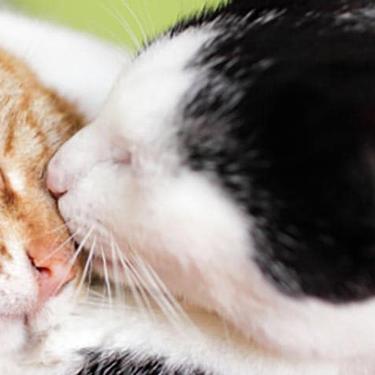
Learn the different factors that might be contributing to your cat's weight gain, and how bigger doesn't always mean better.
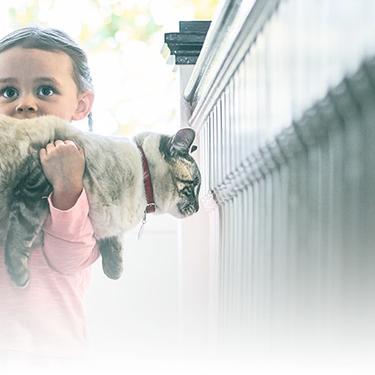
Discover how to identify cat sensitive skin and what you can do to help your cat thrive from head to paw.

Brushing your cat's teeth is just as important as brushing your own. Learn signs or oral health problems in your cat and how to avoid them.
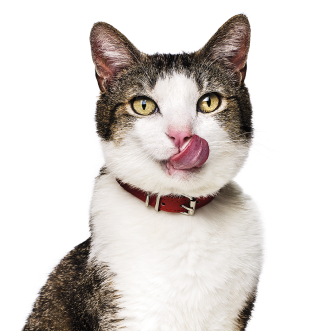
Put your cat on a diet without them knowing
Our low calorie formula helps you control your cat's weight. It's packed with high-quality protein for building lean muscles, and made with purposeful ingredients for a flavorful, nutritious meal. Clinically proven antioxidants, Vitamin C+E, help promote a healthy immune system.
Put your cat on a diet without them knowing
Our low calorie formula helps you control your cat's weight. It's packed with high-quality protein for building lean muscles, and made with purposeful ingredients for a flavorful, nutritious meal. Clinically proven antioxidants, Vitamin C+E, help promote a healthy immune system.


